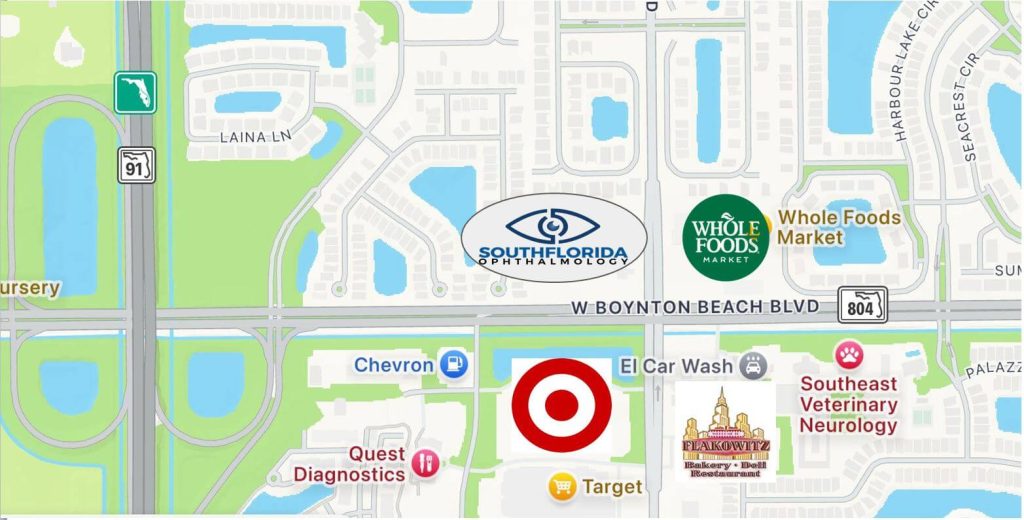Laser Procedures
Femtosecond Laser
The femtosecond laser is a revolutionary tool in ophthalmology that delivers unparalleled precision in various eye procedures. With ultrafast pulses of light, this laser system allows for exceptional accuracy and improved outcomes. It has transformed cataract surgery by creating precise incisions and optimizing lens capsule openings, resulting in better visual outcomes. Refractive surgeries like LASIK and SMILE benefit from the femtosecond laser’s ability to create precise corneal flaps or lenticules, ensuring accurate and rapid visual recovery. The laser’s use in corneal transplants enables customized grafts and precise incisions, leading to successful integration and visual rehabilitation. The femtosecond laser offers reduced surgical time, minimized tissue trauma, and enhanced patient comfort. Our clinic proudly utilizes this advanced technology to provide patients with the highest level of care. Schedule an appointment to explore how the femtosecond laser can benefit your specific needs and experience the future of ophthalmic care.

YAG Laser Capsulotomy

Selective Laser Trabeculoplasty (SLT)
Selective Laser Trabeculoplasty (SLT) is a minimally invasive laser procedure used to manage open-angle glaucoma. It targets specific cells in the eye’s drainage system to improve fluid outflow and reduce intraocular pressure. SLT is a selective and safe treatment that can be repeated if needed, without causing scarring. It is typically performed as an outpatient procedure with minimal discomfort.
SLT helps slow down glaucoma progression and protect the optic nerve, preserving vision. Mild discomfort and temporary vision fluctuations may occur after the procedure, but they usually resolve within a few days. Regular follow-up appointments are necessary for monitoring. Consult with an ophthalmologist or glaucoma specialist to determine if SLT is suitable for your glaucoma management.

Setting Proper Expectations after SLT Treatment
- Effectiveness: SLT can effectively lower intraocular pressure (IOP) but may not eliminate the need for glaucoma medication entirely.
- Timeframe: The full effect of SLT may take several weeks to manifest, and IOP reduction occurs gradually.
- Repeatability: SLT can be repeated if necessary to maintain optimal IOP control.
- Medication Adjustment: Your ophthalmologist may adjust your glaucoma medication regimen based on your response to SLT.
- Lifestyle Considerations: SLT is part of ongoing glaucoma management, and regular visits to your ophthalmologist, adherence to medication, and healthy lifestyle habits are essential.
- Side Effects: Potential side effects include temporary inflammation, mild discomfort, blurred vision, or light sensitivity, but complications are rare.
Discussing these points with your ophthalmologist will help you understand what to expect and ensure personalized care throughout your glaucoma management journey.
Endolaser
What Can I Expect From The Endolaser Procedure?
Endolaser, also known as endolaser photocoagulation, is a technique used in certain surgical procedures to treat specific eye conditions. It involves the application of laser energy inside the eye, targeting specific structures for therapeutic purposes.
Endolaser is commonly used in vitreoretinal surgeries, such as retinal detachment repair or the treatment of proliferative diabetic retinopathy. In these procedures, the laser is delivered through a special probe inserted into the eye, allowing precise and controlled application of laser energy to the targeted areas.
The purpose of endolaser treatment may vary depending on the specific condition being treated. It can be used to create laser scars to seal retinal tears or holes, thus helping to reattach the retina in cases of retinal detachment. In diabetic retinopathy, endolaser is used to treat abnormal blood vessels and reduce the risk of further complications.
The procedure is typically performed under local or general anesthesia, and the ophthalmologist carefully directs the laser to the intended areas inside the eye. The laser energy creates thermal coagulation, which promotes tissue adhesion or destroys abnormal blood vessels.
After endolaser treatment, patients may experience some discomfort or redness, which can be managed with medication. Regular follow-up appointments are crucial to monitor the healing process and evaluate the treatment’s effectiveness.
It’s important to note that the use of endolaser and the specific details of the procedure will depend on the individual patient’s condition and the surgeon’s judgment. Therefore, it’s essential to consult with an ophthalmologist or retina specialist who can provide personalized information and guidance based on your specific needs.
If you would like to schedule an appointment please call (561) 880-2480 today!


